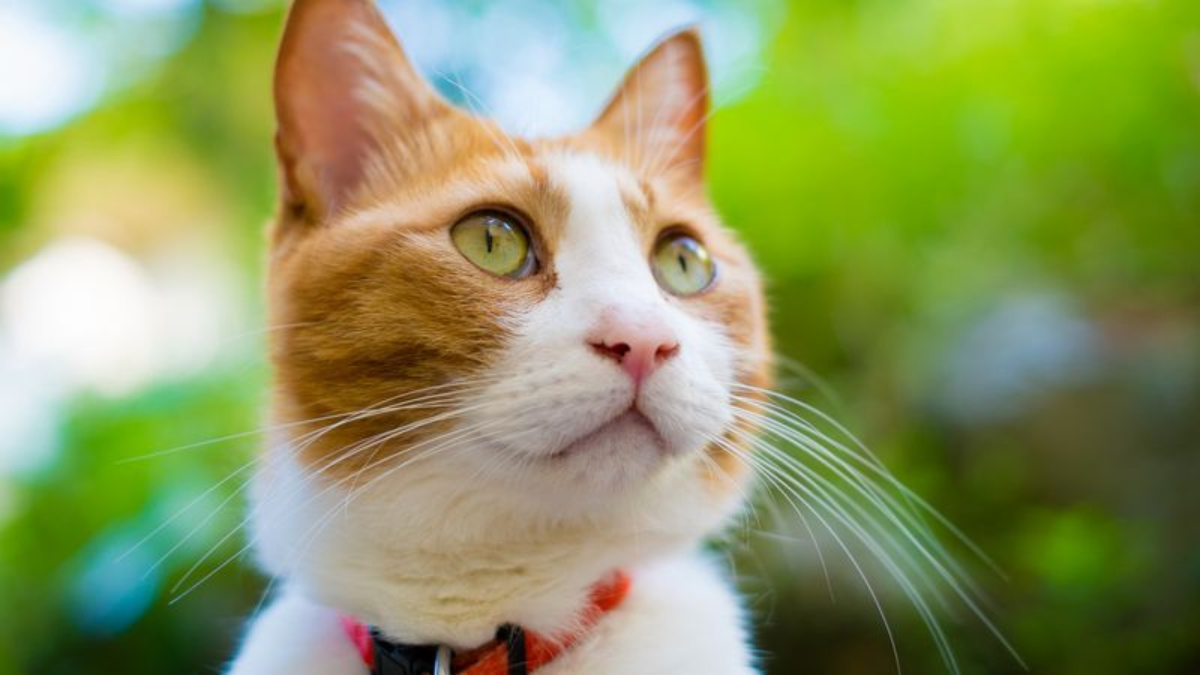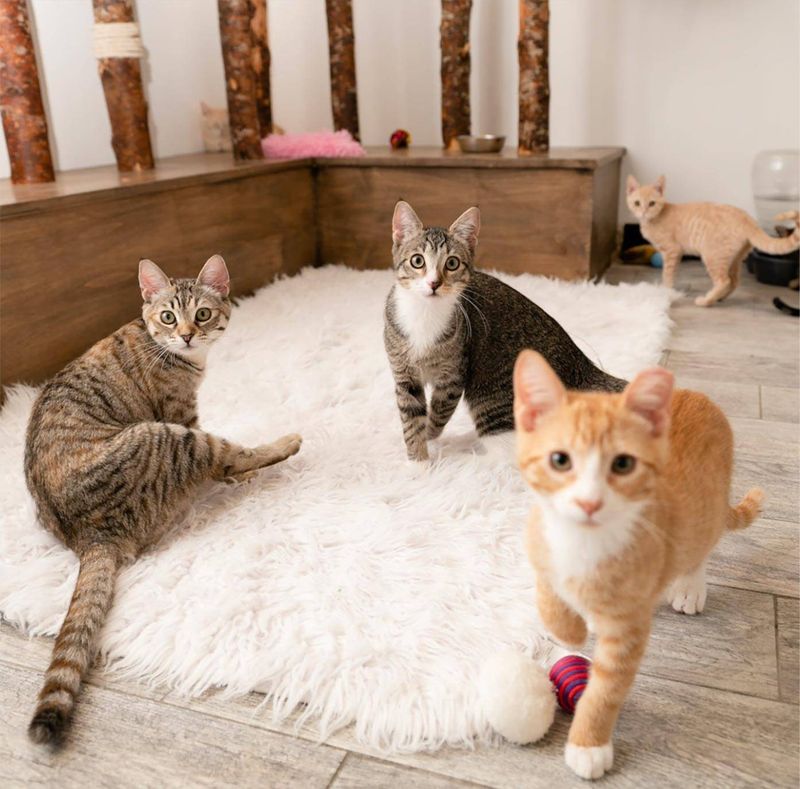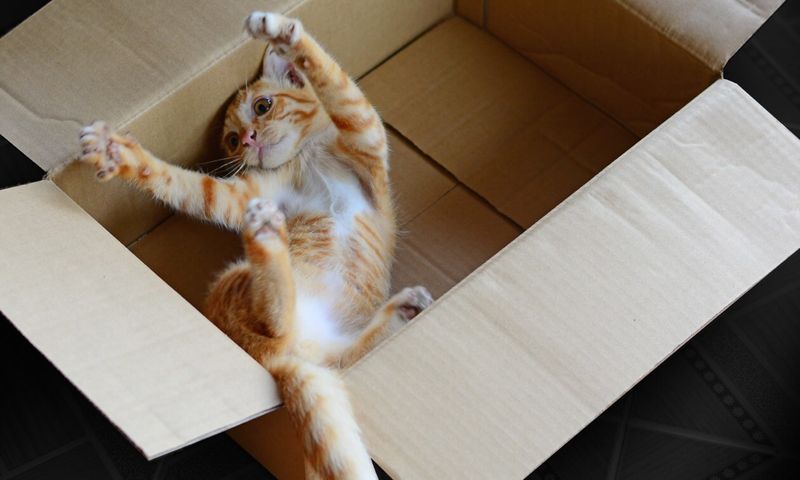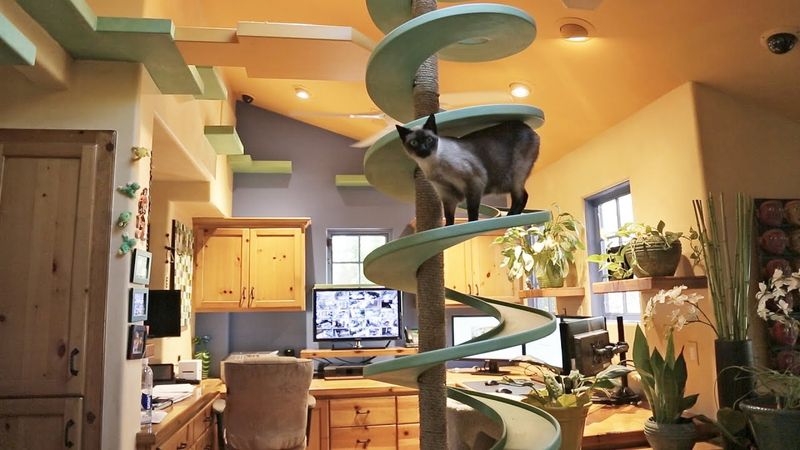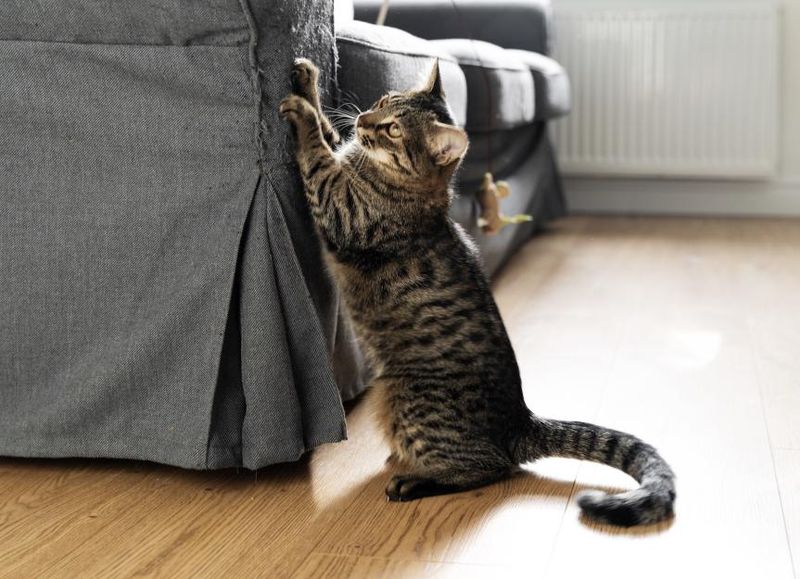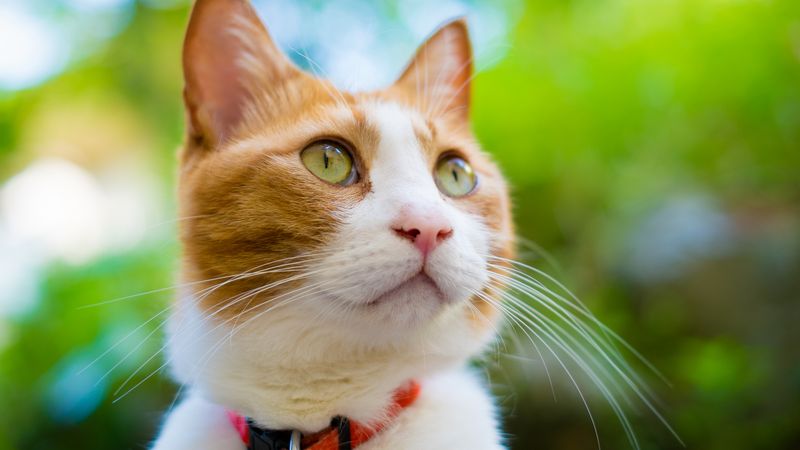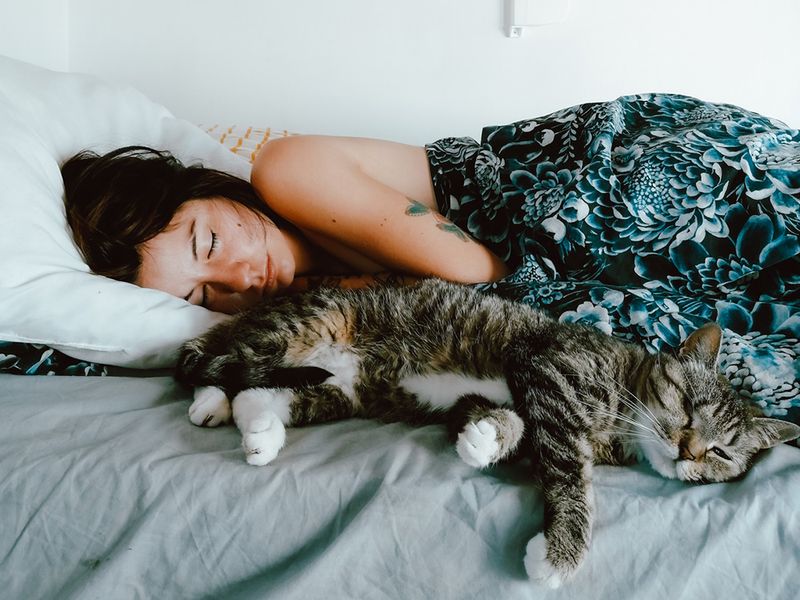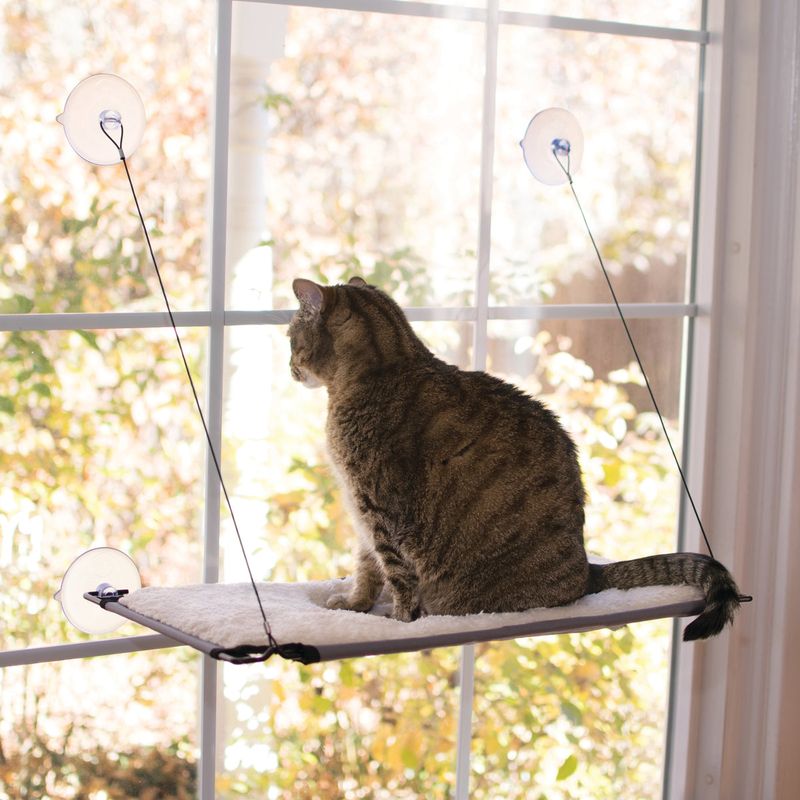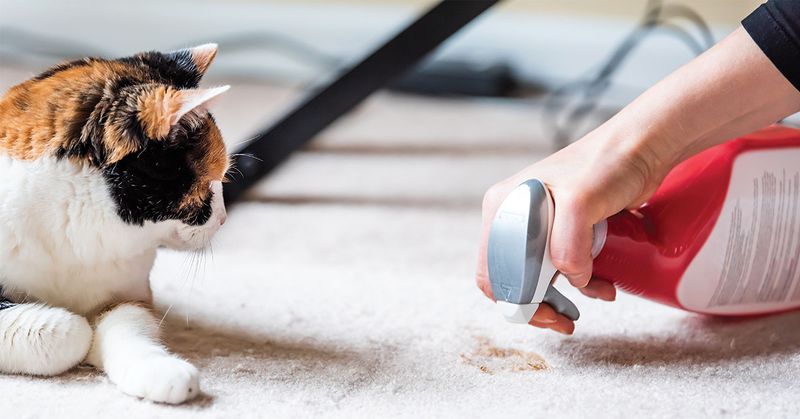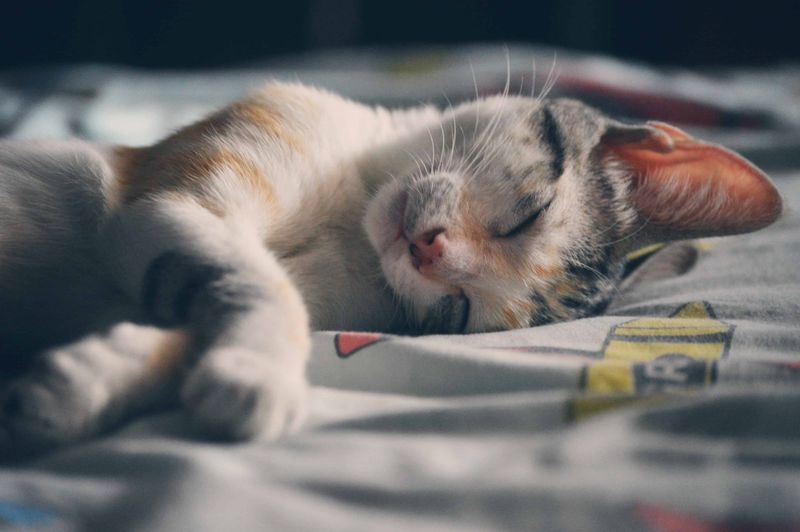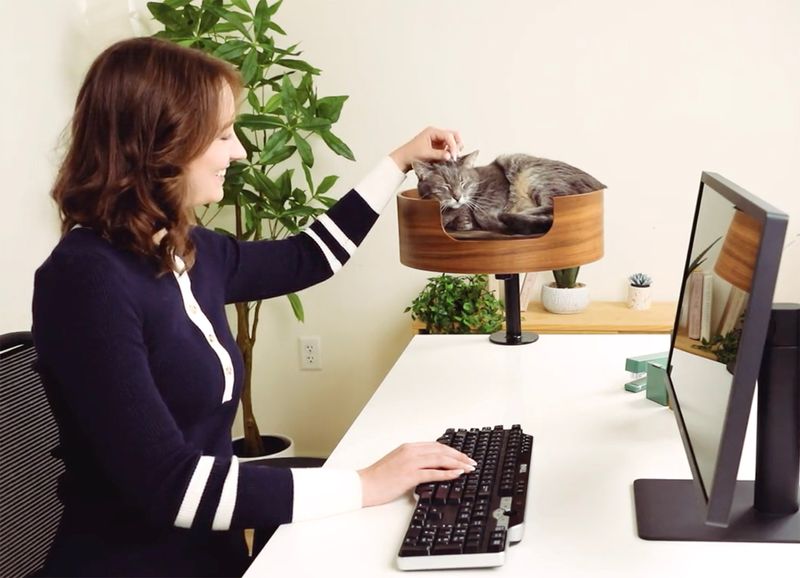📖 Table of Content:
- 1. Your Shopping Cart Contains More Cat Items Than Human Necessities
- 2. Empty Boxes Are Treasures, Not Trash
- 3. Your Furniture Arrangement Considers Cat Pathways
- 4. Your Vocabulary Now Includes Special Cat Sounds
- 5. You Judge New Furniture By Its Scratch-Resistance
- 6. Your Phone Contains More Cat Photos Than People Pictures
- 7. Your Sleep Position Accommodates Feline Comfort
- 8. Window Sills Have Transformed Into Cat Entertainment Centers
- 9. Your Cleaning Routine Revolves Around Fur Management
- 10. Your Home Temperature Settings Prioritize Feline Comfort
- 11. Your Work-From-Home Setup Includes Cat Accommodations
- 12. Your Gift Registry Now Includes Cat-Friendly Plants Only
Homes often change in quiet ways when cats become part of the family. Furniture shifts and new routines emerge to better suit feline companions. These adaptations happen naturally as cats settle into their surroundings.
A living space that supports a cat’s needs creates a sense of comfort and security. Even without intentional effort, certain signs reveal when a home has become a true feline haven. Observing these subtle clues can highlight how deeply cats influence their environment.
From cozy spots to playful setups, cats leave their mark on daily life. Recognizing these indicators shows how intertwined pets and their owners have become. The result is a shared space where both feel at ease.
1. Your Shopping Cart Contains More Cat Items Than Human Necessities
Grocery trips now involve a mental checklist dominated by feline needs. The premium cat food, special treats, and fresh catnip somehow take priority over your own essentials. You find yourself in pet store aisles more frequently than any other section of the market.
Friends might notice your pantry has a dedicated cat section that’s better organized than your human food. Even your online shopping history reveals a pattern – cat toys, cat beds, and cat vitamins outweigh your personal purchases.
The delivery person knows you by name and often comments on the steady stream of pet supply packages arriving at your doorstep.
2. Empty Boxes Are Treasures, Not Trash
Delivery boxes enjoy a second life in your home. That Amazon package that arrived yesterday? It’s now prime real estate in your living room, complete with a purring occupant. You find yourself evaluating boxes by their cat-appeal rather than recyclability.
Guests might raise eyebrows at the cardboard collection scattered throughout your home, but you see each one as a free cat entertainment center. The sturdier ones earn permanent spots in your décor, perhaps enhanced with cut-out windows or doorways.
You’ve mastered the art of strategic box placement, creating cat highways and hideaways throughout your living space.
3. Your Furniture Arrangement Considers Cat Pathways
Sofas sit slightly away from walls to create feline corridors. Bookshelves feature strategic gaps for climbing cats, and tables are positioned to create perfect leaping distances. You’ve unconsciously mapped your home’s cat highways and positioned furniture accordingly.
Window-adjacent furniture has become permanent cat observation posts. The armchair by the window wasn’t placed there for the natural reading light – it’s there because it makes an ideal cat sunbathing spot that you can share.
When rearranging rooms, your first consideration is how it will affect established cat routes rather than human traffic flow or aesthetic appeal.
4. Your Vocabulary Now Includes Special Cat Sounds
Random chirps, clicks, and meow-like noises have infiltrated your everyday speech. You’ve developed a special language just for communicating with your feline friend – complete with unique sounds that somehow make perfect sense to both of you.
Phone calls often include unexplained noises as you automatically respond to your cat walking by. Coworkers on video calls have witnessed your impromptu cat conversations when your pet demands attention.
Family members can identify exactly what you’re trying to communicate to the cat based on your specific pitch and tone variations. Your cat vocabulary has become so natural you sometimes catch yourself using these sounds when no cat is present.
5. You Judge New Furniture By Its Scratch-Resistance
Fabric swatches have become scratch tests in your shopping process. Before purchasing any new furniture, you mentally calculate its cat-durability score. Leather? Too easily punctured. Microfiber? Much better option.
Sales associates have grown accustomed to your unusual questions about material resilience against claws. You’ve developed expertise in identifying cat-friendly fabrics at a glance and can spot potential scratch magnets from across the showroom.
Your home now features a cohesive design aesthetic that could be called “feline-practical chic” – beautiful pieces that can withstand daily cat activity while still looking presentable. Scratching posts strategically flank your most valuable furniture investments.
6. Your Phone Contains More Cat Photos Than People Pictures
Storage warnings constantly pop up on your phone, thanks to thousands of cat snapshots. Scrolling through your gallery reveals an extensive feline photoshoot collection – your cat sleeping, playing, sitting, and staring. Each seemingly identical to the untrained eye, but each capturing a unique moment to you.
Friends have stopped asking to see vacation photos because they know they’ll have to sit through an extensive cat slideshow first. Your social media followers recognize your cat better than they recognize you.
You’ve developed professional-level photography skills purely to capture your cat’s best angles in challenging lighting conditions. The perfect cat photo opportunity can interrupt any activity, no matter how important.
7. Your Sleep Position Accommodates Feline Comfort
Nights involve elaborate contortions to avoid disturbing your sleeping cat. You’ve mastered the art of remaining perfectly still in uncomfortable positions because moving would disrupt your purring bedmate. The concept of “your side” of the bed has become theoretical rather than practical.
Morning alarms are unnecessary since your cat has a precise internal clock for breakfast time. You’ve developed ninja-like abilities to slip out of bed without shifting the mattress when nature calls at night.
Guests are bewildered by your ability to sleep in twisted positions that leave generous space for your cat while you balance precariously on the edge. Your sleeping patterns have permanently adapted to feline preferences rather than human ergonomics.
8. Window Sills Have Transformed Into Cat Entertainment Centers
Every window ledge in your home has evolved into a strategic cat perch. You’ve cleared decorative items to make room for feline observation posts. Some windows now feature special shelves or cushions to enhance the cat-viewing experience.
Bird feeders outside windows aren’t for your enjoyment of nature – they’re live entertainment channels for your indoor cats. You’ve researched which seeds attract the most interesting birds for maximum cat television value.
Curtains and blinds remain permanently adjusted to cat-appropriate positions regardless of light, privacy, or temperature considerations. You find yourself regularly cleaning nose prints from glass at cat eye-level, a small price for your pet’s daily window adventures.
9. Your Cleaning Routine Revolves Around Fur Management
Lint rollers appear in every room, car, and bag you own. You’ve developed an impressive collection of specialized fur-removal tools and can identify the most effective method for different surfaces. Vacuuming schedules align with your cat’s shedding cycles rather than actual dirt accumulation.
Black clothing requires strategic planning and last-minute de-furring before leaving the house. You’ve accepted that some level of cat hair is simply part of your personal aesthetic now.
Guests with cat allergies receive mental risk assessments before invitations are extended. Your cleaning supplies cabinet contains products specifically formulated to handle hairballs, tracked litter, and other feline-specific messes that have become normal parts of your household management.
10. Your Home Temperature Settings Prioritize Feline Comfort
Thermostat wars in your household aren’t between humans but between human needs and cat preferences. You’ve memorized your cat’s ideal temperature range and adjust accordingly, even if it means wearing extra layers yourself. Summer air conditioning settings are determined by your furry friend’s comfort rather than energy bills.
Strategic sunny spots remain undisturbed in your home layout, recognized as essential cat warming zones. You’ve invested in heated beds or pads for winter months to ensure your feline has warm options.
Open windows are evaluated based on the quality of breezes and scents they offer your cat rather than fresh air for humans. Weather apps on your phone help you predict prime sunbeam locations throughout the day.
11. Your Work-From-Home Setup Includes Cat Accommodations
Your desk features a dedicated cat space, whether it’s a clear corner or a special shelf. Video conference participants regularly spot a tail, ear, or whisker intruding into the frame. You’ve perfected the professional poker face when a cat jumps onto your keyboard during important meetings.
Work schedules include buffer time for inevitable cat interruptions. The phrase “sorry, my cat needs attention” has become a legitimate reason to reschedule or pause discussions.
Your home office contains strategic decoys – papers or boxes positioned to attract your cat away from important documents. Colleagues know your cat by name and sometimes ask about them before discussing business matters. You’ve mastered one-handed typing while the other hand provides mandatory cat pets.
12. Your Gift Registry Now Includes Cat-Friendly Plants Only
Houseplant selections follow strict cat-safety guidelines. You’ve become an expert on toxic and non-toxic flora, immediately identifying dangerous plants in friends’ homes or garden centers. Your indoor garden consists exclusively of cat-safe varieties, strategically placed for feline grazing.
Cat grass grows in your kitchen alongside human herbs. Friends and family know that plant gifts must pass the cat-safety test or they won’t make it through your front door.
You’ve researched creative ways to protect the few borderline plants you can’t part with, creating elaborate barriers that somehow still look decorative. Garden planning involves designated cat-friendly zones with catnip, silver vine, or cat thyme integrated into the landscape design.
